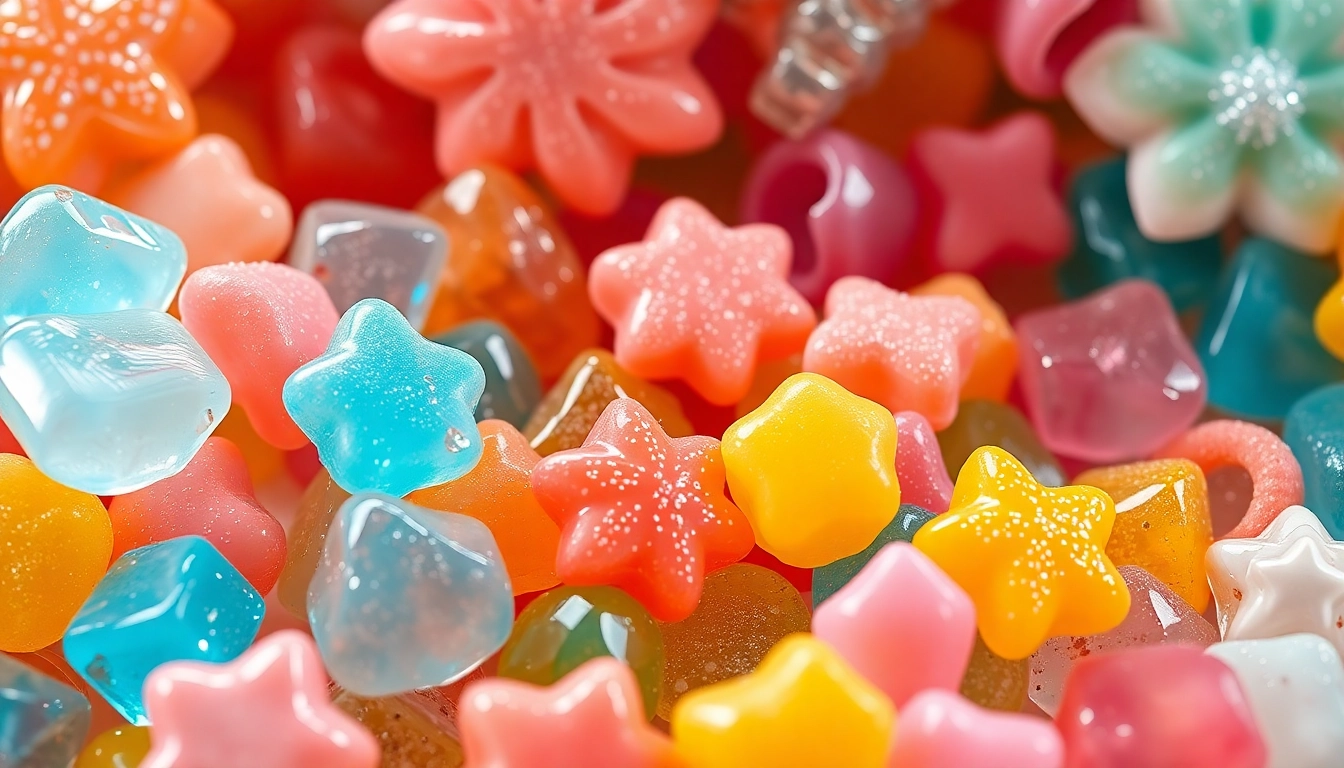1. What is Crystal Candy?
Crystal candy, often recognized for its striking aesthetic appeal, is not just a treat; it’s an experience that engages the senses from sight to taste. This unique confectionary, known in some cultures as crystal candy, has origins rooted in various traditions and enjoyed across many different cultures. In its classic form, crystal candy resembles sparkling jewels, often crafted meticulously to mimic the appearance of precious stones. Beyond its visual allure lies a rich history that intertwines with cultural rituals and culinary practices.
a. Origins and Cultural Significance
The concept of crystal candy can be traced back to ancient Asian cultures, particularly in Japan and Vietnam. The Japanese call this treat Kohakutou, translating to “amber candy,” a fitting name given its transparency and jewel-like appearance. Historically, Kohakutou was created for special occasions like New Year’s celebrations and weddings, symbolizing prosperity and blessings. In Vietnam, similar candies are made as part of traditional festivities. The crafting of these candies integrates both art and food—often made with artisanal methods that prioritize quality and presentation.
b. Main Ingredients and Variations
At its core, crystal candy is typically made from a few essential ingredients: sugar, water, and a gelling agent like agar-agar or gelatine. Agar-agar, derived from red algae, is a popular choice in Asian cooking due to its vegan properties and its ability to create a gelatinous, yet firm texture. Variations in flavor are abundant, ranging from traditional fruit essences—like cherry and mango—to more adventurous combinations, such as matcha or sake-infused candies. Additionally, edible glitter and natural colorings are often added to enhance the visual impact, making crystal candy as pleasing to the eyes as it is to the palate.
c. The Production Process
The process of making crystal candy may seem simple, but it requires precision and skill. First, ingredients are brought to a boil to create a syrup, which is then allowed to cool slightly before being poured into molds. This step is crucial; the mixture must reach a specific temperature to achieve the desired consistency. After pouring, the candy sets at room temperature, typically taking several hours. The final touch often involves a drying period, sometimes lasting days, allowing the outer layer to form a delicate crust, while the inside remains chewy and flavorful.
2. The Magic of Crystal Candy Flavors
With an emphasis on flavors, crystal candy showcases a diverse and delicious selection that can satisfy a range of taste preferences. Its versatility makes it a favorite among candy enthusiasts and chefs alike.
a. Popular Flavors to Try
Among the plethora of flavors available, some stand out significantly. Classic flavors such as strawberry, mango, and matcha remain favorites, each providing a unique sensory experience. The sweetness of strawberry and the tropical hint of mango combine perfectly with the rich umami of matcha. Seasonal flavors, such as pumpkin spice in the autumn or floral-infused treats during spring, can add a distinctive touch as well.
b. Unique Flavor Pairings
Crystal candy offers a canvas for flavor experimentation. Combining flavors can lead to delightful surprises. For example, the tanginess of yuzu can be balanced with the sweetness of coconut, while flavors like chili and lime bring an intriguing twist. Such unusual pairings can elevate the sensory experience, encouraging adventurous consumers to step outside their comfort zones.
c. How to Create Your Own Flavors
Creating your own crystal candy flavors can be both fun and rewarding. Start with a basic recipe using sugar, water, and agar-agar, then introduce your favorite extracts or purees. For instance, for a lavender-infused candy, you can utilize culinary lavender steeped in water before mixing it with sugar. Experiment with different colorings to match the flavors or create a theme for an event. Remember to test your combinations in small batches to find the perfect balance before scaling up production.
3. Enjoying Crystal Candy: Serving Suggestions
The beauty of crystal candy extends beyond its flavors; how it is presented can enhance the overall experience. Various serving strategies can make these treats even more appealing.
a. Presentation Ideas for Special Occasions
When incorporating crystal candy into special occasions, presentation is key. Utilize elegant serving trays or glass containers to display the candies, allowing their sparkling beauty to shine. For weddings, consider personalizing each guest’s candy box; this not only serves as a delightful dessert option but also as a memorable favor. During festive gatherings, a colorful arrangement of assorted flavors can add a visual centerpiece to the table.
b. Pairing with Other Treats
To elevate the tasting experience, consider pairing crystal candy with other desserts. For example, serve with matcha green tea or herbal teas that can complement the candy flavors beautifully. Ice creams or sorbets made from similar fruit flavors can also serve as delightful companions, enhancing the overall palate experience.
c. Creative Ways to Gift Crystal Candy
Giving crystal candy as a gift requires creativity to make it memorable. Customized gift boxes filled with an assortment of flavors allow recipients to sample various tastes. Presenting them in themed packaging—such as seasonal colors or shapes for holidays—can add an extra element of surprise. Additionally, including pairing suggestions or recipes can inspire the recipient to experiment and create their unique treats.
4. Benefits of Choosing Crystal Candy
Beyond their delightful taste and presentation, crystal candies offer several advantages that make them a popular choice among health-conscious consumers.
a. Healthier Sweet Treat Options
Unlike many commercial candies laden with artificial ingredients and preservatives, crystal candies can be made using natural, wholesome ingredients. This has led to their rise as a preferred option for those seeking healthier alternatives. Lower in calories than many pastries or chocolates, crystal candy allows indulging in a sweet treat while being mindful of one’s health.
b. Vegan and Gluten-Free Choices
Crystal candy’s primary ingredients typically include agar-agar, which is plant-based, making these candies not only suitable for vegans but also gluten-free. This inclusivity allows a broad audience to enjoy them without dietary restrictions posing a concern.
c. Artisanal Quality and Sourcing
Many brands produce crystal candy using artisanal methods, emphasizing quality over quantity. These candies often feature ingredients responsibly sourced, reflecting a commitment to sustainability. Thus, choosing crystal candy supports local artisans and small businesses focused on craftsmanship.
5. Purchasing Crystal Candy: Where to Buy
For those eager to dive into the world of crystal candy, numerous purchasing options exist that cater to various preferences and needs.
a. Top Online Retailers
Online marketplaces, such as specialty candy retailers and platforms like Amazon, offer curated selections of crystal candy. Stores like Silky Gem have dedicated collections specifically for Kohakutou and other crystal candy varieties, appealing to shoppers looking for authenticity and unique flavors.
b. Specialty Candy Stores
Visiting local candy shops can also yield delightful surprises. Many specialty stores focus on gourmet or ethnic varieties, often stocking crystal candy sourced from different cultures. Furthermore, local stores frequently provide the benefit of sampling before purchase, ensuring customer satisfaction.
c. Tips for Buying in Bulk
If you plan on purchasing crystal candy for events or parties, consider buying in bulk. Online retailers usually offer discounts for larger quantity purchases. Always inquire about individual packaging options for easier distribution among guests. Additionally, check expiration dates and storage instructions to maintain optimal freshness for your treats.






